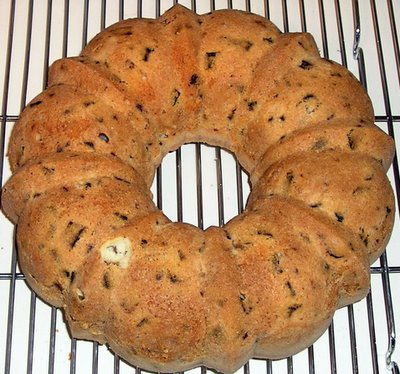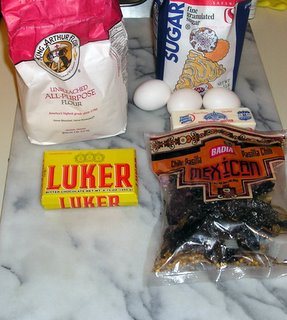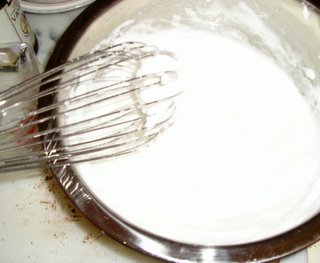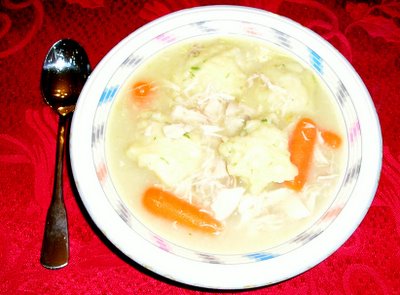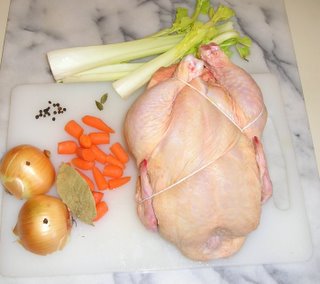Villainelle
As it happens, the villanelle is uniquely suited to describing The Taste of America because both rely heavily upon repetition. The Hesses are not afraid to make their point a sixth, eighth, or twelfth time, on the off chance, one supposes, that you were sleeping through the first five, seven, or eleven, for which you could certainly be forgiven.
Poets and students of poetry may feel that I have taken certain liberties with the villanelle form. Let me hasten to assure you that this impression is a figment of your imagination. Any extra syllables, faulty rhymes, metrical anomalies, or a general lack of
A Poem for the Hesses
Sauces with flour are library paste,
Culinary depravity
American people have terrible taste
Modern cooks value nothing but haste
Appearance over quality
Sauces with flour are library paste
Fannie Farmer, a talentless waste,
Pilfered every recipe
American people have terrible taste
Julia Child we can never (never, never, never, never) sufficiently lambaste
Though we did try tirelessly
Sauces with flour are library paste
Our small farms having been displaced
We churn out flavorless, sad poultry
American people have terrible taste
Our forefathers' tables were wonderfully graced
But all now is catastrophe
American people have terrible taste
Sauces with flour are library paste
I want to be very clear about two things. First, the Hesses make several valuable points in The Taste of America, and there is a good deal to be learned from the book. Second, I don't like them, not one little bit.
I may not be entirely rational about this issue. It turns out that the quickest way for a food writer to get on my bad side is to go after Julia Child, the culinary figure than whom I hold no one in greater reverence. The edition of The Taste of America that I have includes the original manuscript of the book and a number of appendices. In the original book, there are unkind words for Mrs. Child, but then there are unkind words for any number of people, and the Hesses certainly have worse things to say about Craig Claiborne, James Beard, and Fannie Farmer.
In 1997, however, the Hesses wrote "Icon Flambé" for The Nation. It is difficult to imagine what might have prompted this dyspeptic attack on an eighty-five-year-old woman, but in the absence of an actual police report, we can only assume that Mrs. Child did not, in fact, eat any of the Hesses' children. Whatever the motivation, "Icon Flambé" takes a few instances in which the Hesses claim that Mrs. Child strayed from culinary ideals and from this infers that she was a fraud who made no valuable contributions to American cuisine. One might suppose that someone who had reached her eighties and had had such a huge impact on so many American cooks might have made a few minor mistakes along the way but might reasonably expect to be judged by the totality of her actions and achievements rather than by a few actions with which the authors did not agree. But one would be mistaken.
And, indeed, one might forgive the Hesses for writing a hatchet piece about Mrs. Child if it had disappeared along with the back issues of The Nation, but they included it in the revised version of The Taste of America, so one can only assume that they are proud of their invective.
If there was information about John Hess' early years in The Taste of America, I missed it, but the authors are very clear that Karen Hess was the daughter of a Midwestern protestant minister. I was afflicted with a number of protestant ministers during my own youth, and, as a whole, I did not find these people to have a great appreciation for gray areas, and the Hesses certainly carry on this tradition of obtuse intolerance. One can easily imagine the Hesses picturing themselves at the right hand of God looking down at various figures in American culinary history, saying, "Chaff, chaff, wheat, chaff, chaff, chaff, chaff, chaff, wheat, chaff, chaff...."
The Hesses' main beef with Mrs. Child (and many others) appears to be that she emphasized technique over the quality of ingredients. There is probably merit to the complaint that the gourmet movement generally held that you could make any food more attractive by throwing money, bizarre ingredients of questionable quality, overly fussy processes, and a lot of time at it, but it does not follow that technique is unimportant. Mrs. Child had television shows that were mainly about technique, but that is clearly the sort of thing that is easiest to teach on television. How many episodes of The French Chef might reasonably have been spent on trips to the market demonstrating how to pick fresh fish? It's not like you can demonstrate smell over the television. Nonetheless, I remember a number of occasions where she emphasized the importance of ingredients, saying that if you couldn't obtain a good specimen of a particular ingredient, you were better off leaving it out.
You cannot cook well with awful ingredients, but neither can you cook well with awful technique, and the relative importance of each depends a great deal on what you're preparing and serving. Certainly, if you're serving raw peaches, the quality of the peaches is paramount. But if you take a cook who knows how to make pie dough and a cook who doesn't, give the first Gold Medal flour and store brand salted butter and the second the finest artisan flour and the freshest imaginable butter, and compare the results, you'll find that the person who knows how to make dough will have prepared something superior. Naturally, you would want the person who knows the technique to have the best possible ingredients, but the technique is unquestionably important, and somebody has to teach the technique. For millions of Americans, myself included, that person was Julia Child, and to suggest that all of those people, myself included, eat worse because of the influence of Mrs. Child is the purest poppycock.
I do not, however, want to treat the Hesses the same way that they treated Mrs. Child. It would be wrong to ignore all of the good and important information in The Taste of America simply because its authors are mean spirited. (And there are certainly parts of the book where the invective is amusing. There is a lengthy discussion of restaurants, for example, where it is difficult not to laugh at the descriptions of culinary excess. If only that discussion had been half as long. Alas.)
Most of us long for a world where we can find fresh produce full of taste and free of pesticides. Where local dairies milk local cows and prepare local butter and local cheese that can be purchased (locally) fresh any time we want it. That we do not live in such a world, however, is really not the fault of the gourmet movement. It is, rather, the necessary result of overpopulation and failed agricultural policies, a point that the Hesses make eloquently, but not until the penultimate chapter of the book, leaving me to say, "yes, but" any number of times in the earlier chapters.
It is perhaps difficult to appreciate The Taste of America today in the same way as one would have when it was originally published. Many of the situations that the Hesses deplore are still around, but there has certainly been an increase in the availability of organic produce and an increase in the diversity of produce generally. There have been people (Alice Waters leaps to mind) who have been emphasizing the importance of starting with the best possible ingredients. Some of these people may indeed have been inspired by The Taste of America. And certainly, if we all followed the Hesses prescriptions, we would all enjoy our food a good deal more. Whether their prescriptions can really be scaled to the population as a whole remains an open question. As does whether the book would be more effective with less repetition, less bile, and fewer attacks on Julia Child.

